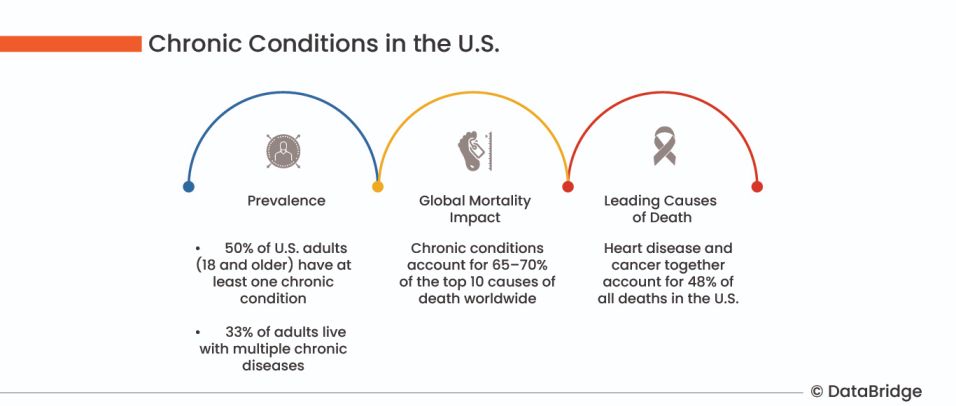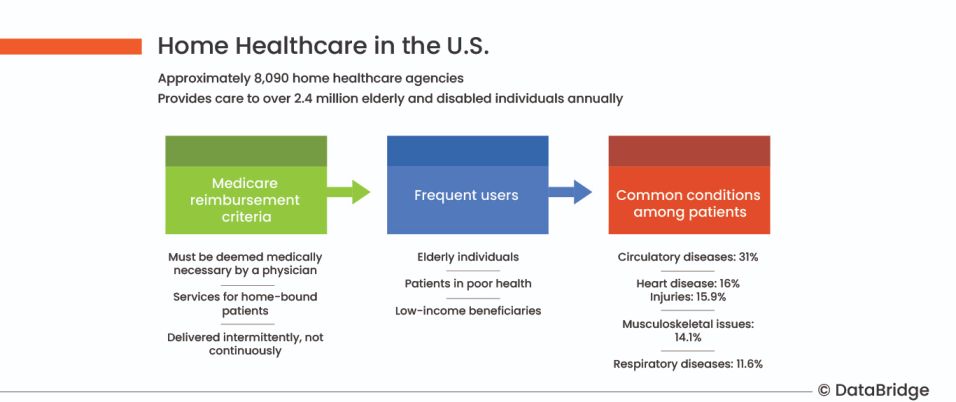Introduction
In today’s fast-paced world, healthcare is transforming to meet the growing demands for accessible, cost-effective, and personalized solutions. Home healthcare has emerged as a vital part of this transformation, allowing patients to receive medical care in the comfort of their own homes. This approach to care is convenient and ensures that individuals receive tailored treatment plans that cater to their specific needs. With the rapid advancement of technology and healthcare practices, home healthcare is redefining patient care and providing alternatives to traditional hospital settings.
According to the World Health Organization (WHO), by 2050, the global population aged over 65 will surpass that of children under 14. Additionally, around 15% of the world’s population lives with disabilities, with 110–190 million adults experiencing significant functional challenges. Individuals with disabilities often face barriers to receiving adequate healthcare due to limited mobility and independence.
Source: MDPI
Chronic diseases, such as heart disease, stroke, cancer, and diabetes, are particularly common in adults. In the U.S., half of all adults aged 18 and older have at least one chronic condition, and one in three adults live with multiple chronic diseases. These conditions are responsible for a significant portion of global mortality, accounting for approximately 65–70% of the top 10 causes of death. Notably, heart disease and cancer together make up 48% of all deaths, making them the leading causes of mortality.
The growing elderly population, the prevalence of disabilities, and the high burden of chronic diseases highlight the importance of accessible and comprehensive healthcare solutions, such as home healthcare, which can address the diverse needs of these vulnerable populations.
The global home healthcare market is experiencing significant growth, driven by several factors. One of the key drivers is the rising geriatric population worldwide, leading to an increased need for long-term care and chronic disease management. Global home healthcare market size was valued at USD 108.06 billion in 2023 and is projected to reach USD 213.74 billion by 2031, with a CAGR of 8.90% during the forecast period of 2024 to 2031.
To know more, visit https://www.databridgemarketresearch.com/ko/reports/global-home-healthcare-market
The Evolution of Home Healthcare
Home healthcare has evolved significantly from its traditional roots, where basic care was provided at home by family members or traveling doctors. Today, it encompasses a wide range of services, including skilled nursing, rehabilitation therapy, chronic disease management, and advanced treatments such as dialysis or chemotherapy. This sector has experienced substantial growth due to increased demand for flexible, cost-effective healthcare solutions. Key drivers of this growth include an aging population, advancements in telemedicine, and the rising prevalence of chronic illnesses. The COVID-19 pandemic further accelerated the adoption of home healthcare, as patients sought safer alternatives to hospital visits.
Home healthcare is a system of care delivered by skilled practitioners to patients in their homes, under the direction of a physician. Services include nursing care, physical, occupational, and speech therapy, as well as medical social services. The primary goals are to help patients improve function, promote independence, and optimize well-being while preventing hospitalization or long-term care facility admission. Home healthcare services can be recommended by physicians or requested by patients and their families.
Source: National Library of Medicine
According to the Centers for Medicare and Medicaid Services (CMS), there are approximately 8,090 home healthcare agencies in the U.S., providing care to over 2.4 million elderly and disabled individuals annually. For Medicare reimbursement, home healthcare must be deemed medically necessary by a physician, provided to home-bound patients, and delivered intermittently rather than continuously. Medicare beneficiaries who are elderly, in poor health, or have low incomes are frequent users of these services. Common conditions among home healthcare patients include circulatory diseases (31%), heart disease (16%), injuries (15.9%), musculoskeletal issues (14.1%), and respiratory diseases (11.6%).
This modern approach to healthcare allows patients to receive comprehensive, personalized care in their homes, enhancing quality of life while reducing healthcare costs and minimizing the need for hospital stays.
Discover in-depth insights on the Home Healthcare Market. Visit Data Bridge Market Research for the latest trends, forecasts, and comprehensive analysis. Unlock your market potential today!
To know more, visit https://www.databridgemarketresearch.com/ko/reports/global-healthcare-it-market
Key Services Offered by Home Healthcare
Home healthcare encompasses a broad array of services aimed at providing comprehensive care to patients without the need for frequent hospital visits. Some of the primary services include:
- Skilled Nursing Care: This involves professional nurses visiting patients at home to provide care such as wound dressing, medication administration, and monitoring of vital signs
- Physical, Occupational, and Speech Therapy: Rehabilitation services are often delivered at home, helping patients recover from surgeries, injuries, or strokes. These therapies ensure that patients regain mobility, functionality, and communication skills in a familiar environment
- Chronic Disease Management: Patients with conditions such as diabetes, hypertension, or heart disease can benefit from regular monitoring and care. Home healthcare providers help manage symptoms, offer dietary guidance, and adjust medications as necessary
- Personal Care Assistance: For individuals who require assistance with daily activities such as bathing, dressing, and meal preparation, home healthcare aides provide invaluable support
- Advanced Medical Treatments: Some services include the administration of treatments such as intravenous therapy, dialysis, or even chemotherapy, allowing patients to avoid frequent hospital trips
- Telemedicine and Remote Monitoring: Advances in technology have made it possible for patients to consult with their doctors via video calls, while wearable devices monitor vital signs in real time, alerting healthcare professionals to any issues
Advantages of Home Healthcare
The benefits of home healthcare extend beyond the convenience it offers. Key advantages include:
- Personalized Care: Home healthcare is tailored to meet the unique needs of each patient. This individualized approach often leads to better health outcomes, as the care plans are designed specifically for the patient’s condition and lifestyle
- Cost-Effective: Treating patients at home can significantly reduce healthcare costs. Hospital stays and readmissions are expensive, but home healthcare can provide the same level of care at a fraction of the cost
- Comfort and Familiarity: Patients tend to recover faster when they are in a familiar environment. The comfort of being at home can reduce anxiety and stress, which can, in turn, lead to quicker healing
- Reduced Risk of Infections: Hospitals can expose patients to infections, particularly those with weakened immune systems. Home healthcare minimizes this risk, offering a safer option for patients, especially those recovering from surgery or with chronic illnesses
- Family Involvement: Home healthcare encourages family members to be involved in the care process. Caregivers can easily monitor progress, provide emotional support, and ensure that the patient’s needs are being met
- Improved Quality of Life: By receiving care at home, patients maintain their independence and are able to continue living their lives with minimal disruption. This can improve their overall quality of life, especially for elderly or disabled individuals
Explore the latest trends, forecasts, and in-depth analysis of the telehealth market with Data Bridge Market Research. Unlock your market potential and stay ahead today!
To know more, visit https://www.databridgemarketresearch.com/ko/reports/global-telehealth-market
The Role of Technology in Home Healthcare
Technology is playing a pivotal role in the expansion and efficiency of home healthcare services. Some key technological advancements include:
- Telemedicine: Virtual consultations have become more common, allowing patients to receive medical advice without leaving their homes. This is particularly beneficial for patients in remote areas or those with mobility issues
- Remote Monitoring Devices: Wearable devices, such as smartwatches or sensors, can monitor a patient’s vital signs and alert healthcare providers to any abnormalities. This real-time data helps in preventing medical emergencies and allows for timely interventions
- Artificial Intelligence (AI) and Machine Learning: AI-driven algorithms can analyze patient data to predict potential health risks, enabling proactive care. For instance, AI can detect early signs of a stroke or heart attack by analyzing data from wearable devices
- Mobile Health Apps: These apps allow patients to track their health metrics, manage medications, and communicate with healthcare providers. They serve as a bridge between patients and their care teams, ensuring continuous care
- Robotics and Assistive Technologies: Robotic devices are being used to assist with physical therapy exercises at home, while assistive technologies, such as mobility aids and smart home systems, are helping elderly or disabled individuals live more independently
The Future of Home Healthcare
The future of home healthcare looks promising, with the market expected to continue growing as demand for more personalized and accessible care increases. Some of the future trends include:
- Integration of AI and Big Data: AI and big data will further personalize care by analyzing vast amounts of patient data to predict health trends and optimize treatment plans
- Expansion of Telehealth: As more healthcare providers adopt telehealth platforms, patients will have greater access to virtual consultations, making healthcare more convenient and accessible, especially in underserved areas
- Innovative Home Medical Equipment: The development of portable and user-friendly medical devices, such as home dialysis machines and advanced health monitors, will allow patients to receive more complex treatments at home
- Aging Population: With an aging global population, the demand for home healthcare services is expected to rise. Elderly patients will increasingly prefer receiving care at home, driving the need for more specialized services
- Policy and Regulation: As home healthcare becomes more prevalent, governments and healthcare organizations will need to establish regulations and standards to ensure quality care and patient safety
Conclusion
Home healthcare is transforming the way healthcare is delivered, offering patients a more personalized, convenient, and cost-effective alternative to traditional hospital care. As technology continues to advance, home healthcare will become even more efficient and accessible, playing a critical role in the future of patient care. While challenges remain, the benefits of home healthcare make it a promising solution for improving patient outcomes and enhancing the overall quality of life for individuals around the world.













